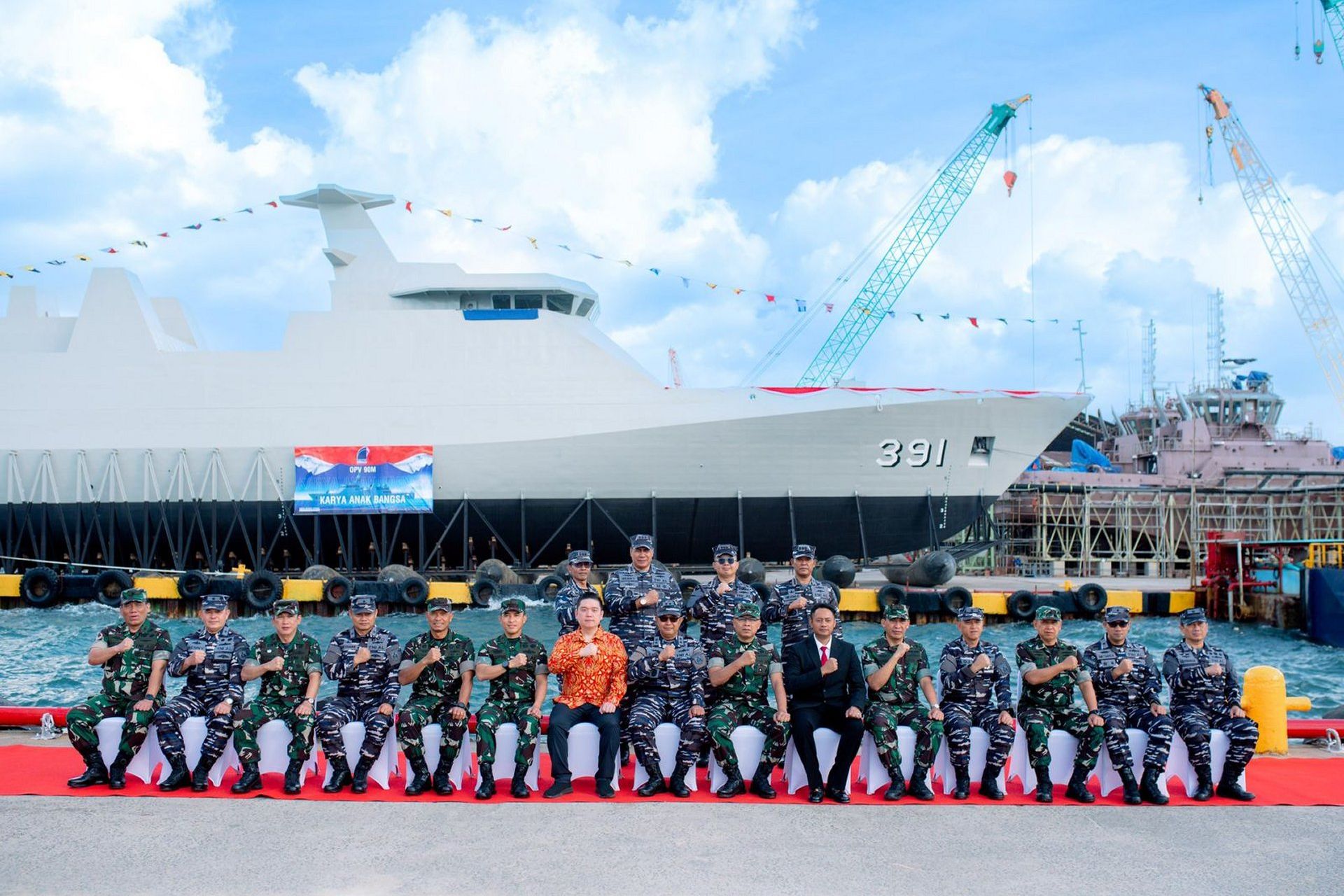Breaking News
Indonesian Defense Ministry launches locally-built OPV 90M vessel in Lampung.
According to information published by the Indonesian MoD on September 18, 2024, Major General TNI Drs. Nugroho Sulistyo Budi, M.M., M.Han., Special Advisor to the Minister of Defense on Political Affairs, presided over the launch ceremony of the OPV 90M vessel.
Follow Army Recognition on Google News at this link

Launching ceremony of the OPV 90M vessel. (Picture source: Indonesian MoD)
The OPV 90M vessels, set for delivery in 2025, feature a robust configuration to handle multiple mission profiles, including anti-submarine and anti-ship operations. Each vessel is equipped with a combat management system (CMS) from the Turkish firm Havelsan, integrating advanced sensors and weaponry. The ship’s armaments include a 76mm Super Rapid gun, provisions for 35mm and 20mm cannons, and missile launchers.
These ships, measuring 90 meters in length with a displacement of approximately 2,100 tonnes, are powered by four diesel engines, providing a top speed of 28 knots. Additionally, one of the vessels will include a helideck and hangar, allowing for helicopter operations.
TNI AL
The Indonesian Navy is undergoing a critical phase of modernization, driven by both domestic imperatives and regional security concerns. Indonesia’s vast maritime domain, which includes critical sea routes such as the Malacca, Sunda, and Lombok Straits, makes its naval capacity essential for national defense and the protection of its economic interests. However, the Navy faces substantial challenges in meeting its ambitious "Green-Water Navy 2024" goals, which were part of a broader military plan for achieving a "Minimum Essential Force" (MEF) by 2024.
A key focus of the Navy’s modernization is expanding its underwater and surface capabilities. The TNI-AL aims to develop a fleet of 274 ships, including submarines, frigates, and patrol vessels. Currently, there is a significant shortfall, particularly in the submarine fleet, which has only four operational units against the target of 12. This shortage is particularly concerning given Indonesia’s vulnerabilities to underwater intrusions, notably by unmanned underwater vehicles (UUVs) from foreign actors such as China. Enhancing underwater detection systems and anti-submarine warfare capabilities are therefore priorities, alongside the acquisition of more advanced submarines and maritime patrol aircraft.
In addition to hardware challenges, geopolitical tensions, particularly in the South China Sea, are putting increased pressure on Indonesia to modernize its naval forces. China's expanding claims and illegal fishing activities in Indonesia's exclusive economic zone have underscored the need for a more robust naval presence, particularly in Indonesia's eastern waters.


























